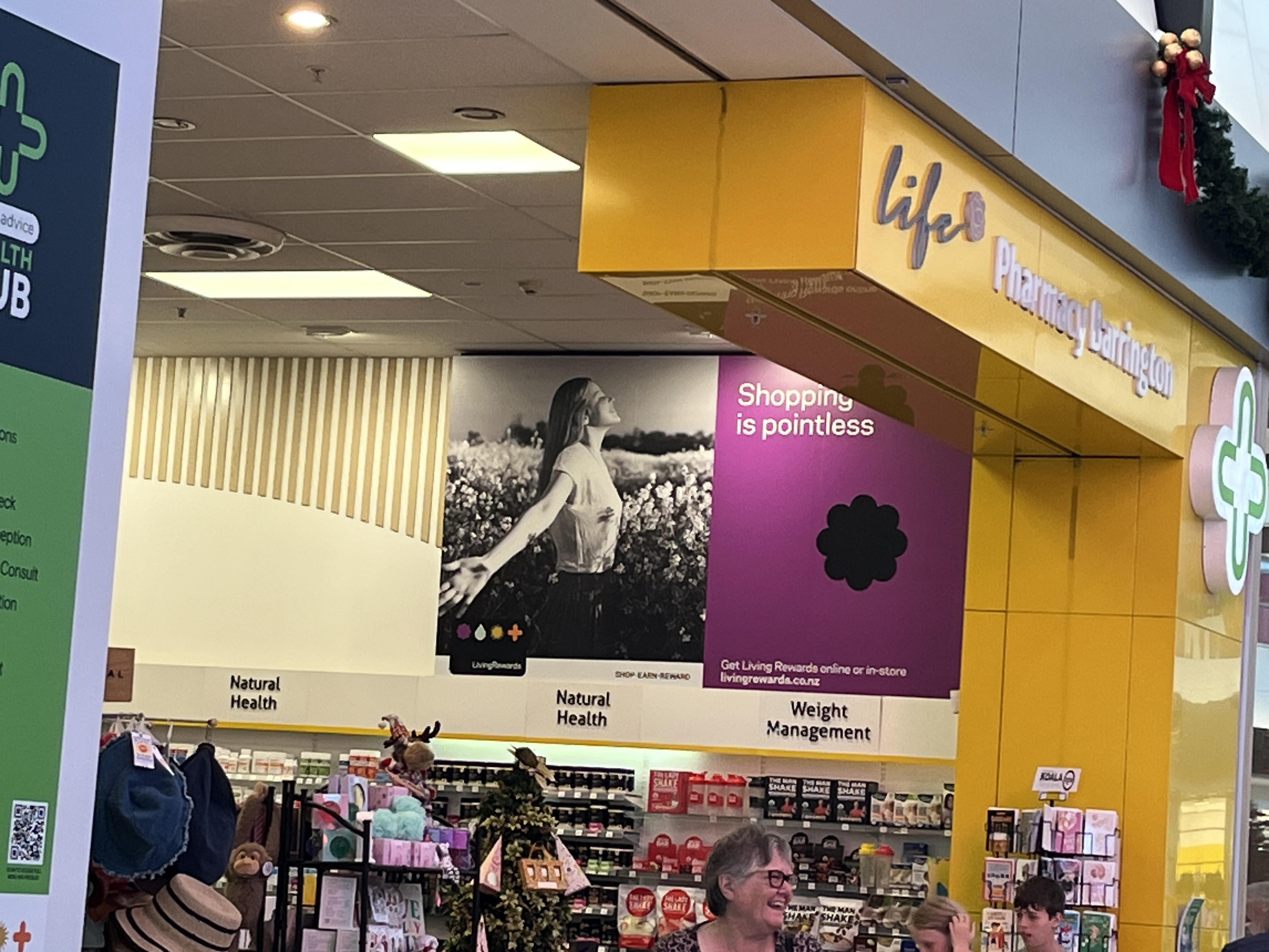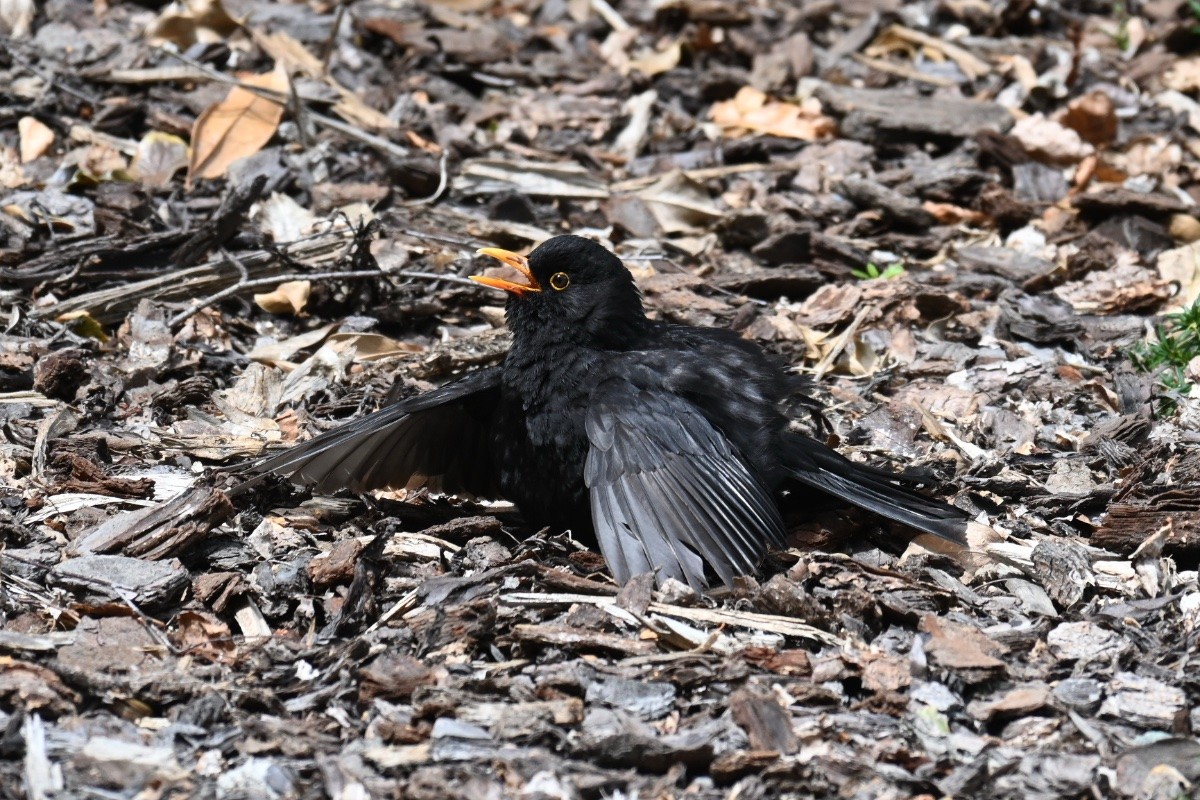Whelp, it was lovely having private medical records. Shame it didn't last.
Hi NZ fediverse, let's see if we can get this iphone back to its owner.
Found after the Christmas in the Park concert at Bowl of Brooklands, New Plymouth, early on 22nd December (so probably lost on the evening of the 21st)
Hi NZ fediverse, let's see if we can get this iphone back to its owner.
Found after the Christmas in the Park concert at Bowl of Brooklands, New Plymouth, early on 22nd December (so probably lost on the evening of the 21st)
Merry Christmas pocket pals ❤️ I hope you have the day you wish for! #christmas #merikirihimete #nz
Merry Christmas pocket pals ❤️ I hope you have the day you wish for! #christmas #merikirihimete #nz
We were out shopping at Barrington Mall today and I was surprised to see this big sign saying “Shopping is pointless” next to a photo of a happy woman in a field of flowers.
My first thought was that it’s some surprisingly on point anti-commercialism messaging to see in a mall at Christmas time.
Then I realised that a word was being blocked from view. When I made a few steps to the left, the whole sign reads “Shopping elsewhere is pointless.”
They were so close!
#mall #shopping #sign #nz #Christchurch #Ōtautahi #Christmas
We were out shopping at Barrington Mall today and I was surprised to see this big sign saying “Shopping is pointless” next to a photo of a happy woman in a field of flowers.
My first thought was that it’s some surprisingly on point anti-commercialism messaging to see in a mall at Christmas time.
Then I realised that a word was being blocked from view. When I made a few steps to the left, the whole sign reads “Shopping elsewhere is pointless.”
They were so close!
#mall #shopping #sign #nz #Christchurch #Ōtautahi #Christmas
A reminder;
For as long as the majority of kiwis do our social networking and access media via DataFarming platforms, owned and controlled by US technofascists, our democracy will be distorted by the effects of those platforms. So any kiwi who cares about the independence of our country, and our freedom to be self-governing - as a whole, as communities and as citizens - needs to start caring about digital sovereignty.
(1/?)
A reminder;
For as long as the majority of kiwis do our social networking and access media via DataFarming platforms, owned and controlled by US technofascists, our democracy will be distorted by the effects of those platforms. So any kiwi who cares about the independence of our country, and our freedom to be self-governing - as a whole, as communities and as citizens - needs to start caring about digital sovereignty.
(1/?)
"I would say it's no longer a technical challenge. It becomes an economic challenge, right? Do we have the money to pay for it and do we want to pay for it."
That’s James Willcocks, project director of Predator Free Wellington (PFW), reflecting on how native bird numbers have more than doubled on Wellington’s Miramar Peninsula suburb. That’s because of the intensive control of predatory pest mammals. Pest control technologies are at a point that NZ cities can be filled with many more native birds, if enough of us want it.
https://www.rnz.co.nz/news/national/581731/native-bird-numbers-double-in-miramar-peninsula
"I would say it's no longer a technical challenge. It becomes an economic challenge, right? Do we have the money to pay for it and do we want to pay for it."
That’s James Willcocks, project director of Predator Free Wellington (PFW), reflecting on how native bird numbers have more than doubled on Wellington’s Miramar Peninsula suburb. That’s because of the intensive control of predatory pest mammals. Pest control technologies are at a point that NZ cities can be filled with many more native birds, if enough of us want it.
https://www.rnz.co.nz/news/national/581731/native-bird-numbers-double-in-miramar-peninsula
There is no reason for this except pure, destructive stupidity. The next time someone loses a house, or their life, in a storm or wildfire, Simon Watts & all of cabinet should be considered responsible
#NZ Government rejects all of #ClimateChange Commission's emissions target recommendations https://www.rnz.co.nz/news/political/580824/government-rejects-all-of-climate-change-commission-s-emissions-target-recommendations
#RNZ #nact #nzpol
Your body's black. It's hot and sunny. Surely you'd go rest in the shade?
Not if you're a blackbird!
Yesterday I was in the Christchurch Botanic Gardens on a hot norwester afternoon, and lots of the resident blackbirds were out sunbathing.
Surprised to find these on my lawn this morning in #Christchurch #otautahi #nz
Very unseasonal
'Pitiful' decision on emissions targets will cost the country, former climate commissioner says
#ClimateChange #GlobalWarming #UpheavalClimate #GlobalBurning #ClimateDestruction #ClimateSuicide #MassAtrocity #pollution #ecology #environment #climate




